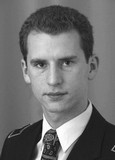GENDER DIFFERENCES OF MORPHOFUNCTIONAL SIGNS IN PERSONS ENGAGED IN SINGLE COMBATS
Keywords:
sexual dimorphism, morphofunctional indicators, taekwondo, boxing, freestyle wrestling.Abstract
Objective of the study was to compare the degree of expression of sexual dimorphism of morphofunctional traits in athletes involved in taekwondo and martial arts in general. 101 athletes and 105 athletes aged 18-23 years old, specializing in martial arts (taekwondo, boxing, freestyle wrestling), performing in the qualification of the I adult category - Master of Sports were examined. All representatives of martial arts were combined into two groups of a single array (sportsmen and athletes). Taekwondo athletes made up two experimental groups (sportsmen and sportswomen).
Methods and structure of the study. With the help of anthropometry, all the necessary measurements were made in athletes (longitudinal, transverse, girth, thickness of skin-fat folds), body mass components and somatotype according to the Heath-Carter scheme were determined, indicators of VC, backbone strength and dynamometry of the leading arm were identified.
Results and conclusions. Differences in the sexual dimorphism of morphological and functional parameters in taekwondo fighters were revealed in comparison with a single array of martial artists. Gender differences in functional indicators in the examined athletes are more pronounced than in morphological parameters, regardless of the type of martial arts.
References
Pavlenko A.V., Rudenko G.V., Vinogradov Yu.I. Osobennosti podgotovki sportsmena i dinamika razvitiya studencheskogo tkhekvando g. Sankt-Peterburga [Features of athlete training and development dynamics of student taekwondo in St. Petersburg]. Teoriya i praktika fizicheskoy kultury. 2019. No. 4. pp. 65-67.
Rudenko G.V., Tkachuk M.G., Dorofeev V.A. Morfologicheskiye pokazateli uspeshnosti sorevnovatelnoy deyatelnosti v yedinoborstvakh [Morphological indicators of the success of competitive activity in martial arts]. Teoriya i praktika fizicheskoy kultury. 2020. No. 4. pp. 92-94.
Sobolev A.A., Tkachuk M.G., Levitsky A.A. Morfofunktsionalnyye kriterii bystroy treniruyemosti sambistov [Morphofunctional criteria for quick trainability of sambists]. Uchenye zapiski universiteta im. P.F. Lesgafta. 2018. No. 7. pp. 247-250.
Sologub E.B., Taymazov V.A., Afanaseva I.A. Sportivnaya genetika [Sports genetics]. St. Petersburg: Politekhnicheskiy universitet publ., 2017. 166 p.
Tkachuk M.G., Oleinik E.A., Dyusenova A.A. [Sports morphology]. Textbook. Lesgaft University, St. Petersburg. St. Petersburg: [n.p.], 2014.
Tkachuk M.G., Dyusenova A.A. [Sexual dimorphism of morphofunctional features in athletes]. Lesgaft University, St. Petersburg. St. Petersburg: [n.p.], 2021.
Carter J. The Heath-Carter anthropometric somatotype. Canada. 2002, 22 p.
Matiegka J. The testing of physical efficienc. American Journal of Physical Anthropology. 1921. Vol. 4. No. 3. pp. 223-230.

Downloads
Published
Versions
- 28-04-2023 (4)
- 27-04-2023 (3)
- 27-04-2023 (3)
- 23-04-2023 (2)
- 17-04-2023 (1)

